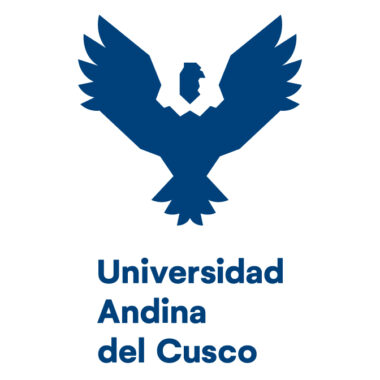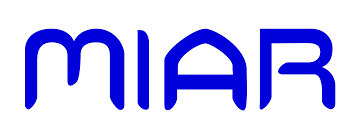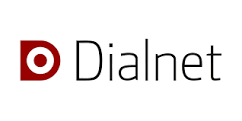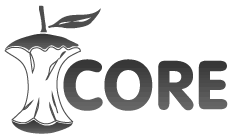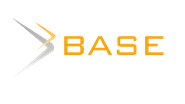Techno-pedagogy of teaching spanish in virtual environments
DOI:
https://doi.org/10.36881/yachay.v14i1.1033Keywords:
digital literacy, pedagogical design, teaching Spanish, pedagogical strategies, techno-pedagogyAbstract
Teaching Spanish as a second language in virtual environments presents challenges, but also opportunities. The incorporation of techno-pedagogy involves the integration of ICTs with pedagogical methodologies, becoming a necessity to improve the quality of education and the effectiveness of teaching Spanish in the virtual environment. The objective of this study was to identify the challenges faced by Spanish teachers at universities in Houston, Texas, proposing strategies based on techno-pedagogy. A structured digital questionnaire was administered to a purposive sample of 15 Spanish teachers. The answers were analyzed using simple thematic coding. The main result indicates that, while 75% of the teachers surveyed considered digital platforms effective for teaching Spanish online, 25% disagreed, highlighting the need to improve their functionality and pedagogical design. Additionally, challenges were identified such as lack of internet access, technical problems, resistance to change on the part of some teachers, and misuse of technology by students. In conclusion, the integration of ICTs in the teaching of Spanish as a second language was identified, which requires continuous techno-pedagogical training for teachers, so that they can use digital platforms effectively and adapt to new tools, highlighting the importance of implementing strategies that promote the ethical and responsible use of technology by students, ensuring meaningful learning.
Downloads
References
Agaron, E. (2019). Los procesos de formación de palabra. (Tesis Doctoral), Universidad de Valladolid.
Bolaño-García, M. & Duarte-Acosta, N. (2024). Una revisión sistemática del uso de la inteligencia artificial en la educación. Revista Colombiana de Cirugía, 39(1), 51-63. https://doi.org/10.30944/20117582.2365
Bolaño-García, M. (2024). Transformando la educación con Inteligencia Artificial: innovaciones para mejorar la experiencia y el rendimiento académico. Praxis, 20(3). https://doi.org/10.21676/23897856.6245
Cabero-Almenara, J., & Palacios-Rodríguez, A. (2021). La evaluación de la educación virtual: las e-actividades. RIED-Revista Iberoamericana de Educación a Distancia, 24(2), 169-188. https://doi.org/10.5944/ried.24.2.28994
Canchola-González, J. A., & Glasserman Morales, L. D. (2020). O conceito de fluidez digital: uma revisão sistemática da literatura 2010-2020. Texto Livre, 13(3), 25–46. https://doi.org/10.35699/1983-3652.2020.25087
Cárdenas-Contreras, G. E. (2022). Docencia Universitaria y Competencias para la Era Pospandemia: Un Proceso Hacia la Alfabetización Digital. Revista Tecnológica-Educativa Docentes 2.0, 14(2), 5-14. https://doi.org/10.37843/rted.v14i2.299
Castellano Latorre, J. (2023). Factores determinantes de la aceptación y uso docente de la tecnología: propuestas para el Desarrollo professional del profesorado. [Tesis Doctoral]. Universidad La Rioja.
Engel, A., & Coll, C. (2022). Entornos híbridos de enseñanza y aprendizaje para promover la personalización del aprendizaje. RIED-Revista Iberoamericana de Educación a Distancia, 25(1), 225-242. https://doi.org/10.5944/ried.25.1.31489
Fernández Vítores, D. (2023). El español: una lengua viva. Informe 2023. Instituto Cervantes. https://goo.su/4TFGgn
Gass, S. M., Behney, J., & Plonsky, L. (2020). Second language acquisition: An introductory course. Routledge. https://doi.org/10.4324/9781315181752
Gómez-Trigueros, I. M. (2023). Validación de la escala TPACK-DGG y su implementación para medir la autopercepción de las competencias digitales docentes y la brecha digital de género en la formación del profesorado. Bordón: Revista de pedagogía, 75(4), 151-175. https://doi.org/10.13042/Bordon.2023.100758
Herring, M. C., Koehler, M. J., & Mishra, P. (Eds.). (2016). Handbook of technological pedagogical content knowledge (TPACK) for educators (189-200). Routledge.
Hockly, N., & Dudeney, G. (2018). Online Language Learning. In A. Burns & J. C. Richards, The Cambridge Guide to Learning English as a Second Language (327-334). Cambridge University Press.
Honeycutt, L., & Sears, E. (2020). Enseñar el castellano en Estados Unidos en la edad digital: estrategias y enfoques para la enseñanza de la gramática en aulas virtuales e híbridas. marcoELE. Revista de Didáctica Español Lengua Extranjera, (31), 1-13. https://www.redalyc.org/journal/921/92163387002/92163387002.pdf
Koehler, M. J., & Mishra, P. (2009). What is technological pedagogical content knowledge? Contemporary Issues in Technology and Teacher Education, 9(1), 60-70. https://scirp.org/reference/referencespapers?referenceid=1565932
Lacorte, M., & Suárez-García, J. (2016). Enseñanza del español en el ámbito universitario estadounidense (Informes del Observatorio/Observatorio Reports 018-02/2016SP). Instituto Cervantes at FAS - Harvard University. https://doi.org/10.15427/OR018-02/2016SP
Melguizo Moreno, E. (2017). Dificultades pragmáticas en estudiantes universitarios: una aproximación didáctica. En Entornos y estrategias educativas para la inclusión social (pp. 183-190). Comares. https://goo.su/zTmBT
Odlin, T. (1989). Language Transfer: Cross-Linguistic Influence in Language Learning. Cambridge University Press.
http://dx.doi.org/10.1017/CBO9781139524537
Pentón Herrera, L. J. (2018). Spanish Language Education in the United States: Beginning, Present, and Future. Íkala, Revista de Lenguaje y Cultura, 23(2), 319-329. https://doi.org/10.17533/udea.ikala.v23n02a08
Sarango Lapo, C. P. (2021). Competencia digital docente como contribución a estimular procesos de Innovación educativa. [Tesis Doctoral]. Universidad de Salamanca.
Tobón, S. (2015). Formación basada en competencias: pensamiento complejo, diseño curricular y didáctica. Complutense de Madrid.
Downloads
Published
How to Cite
Issue
Section
License

This work is licensed under a Creative Commons Attribution 4.0 International License.
You are free to:
- Share — copy and redistribute the material in any medium or format
- Adapt — remix, transform, and build upon the material
- The licensor cannot revoke these freedoms as long as you follow the license terms.
Under the following terms:
-
Attribution — You must give appropriate credit, provide a link to the license, and indicate if changes were made. You may do so in any reasonable manner, but not in any way that suggests the licensor endorses you or your use.

